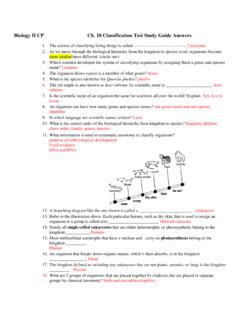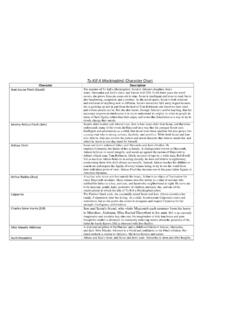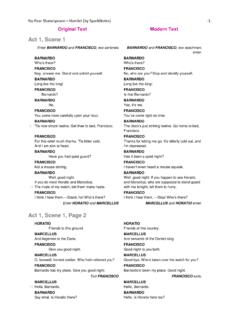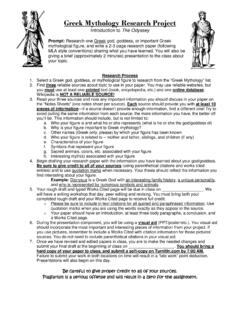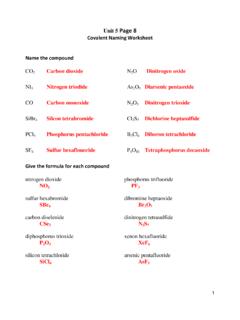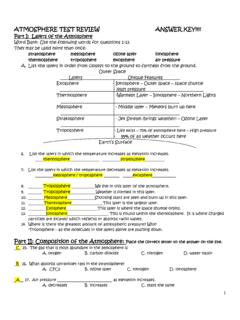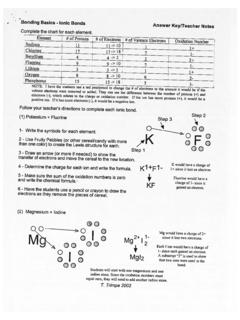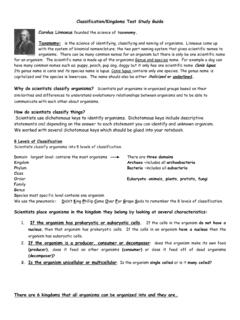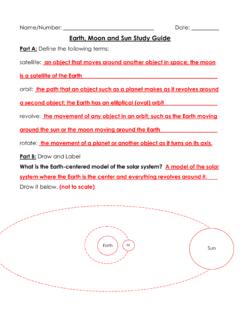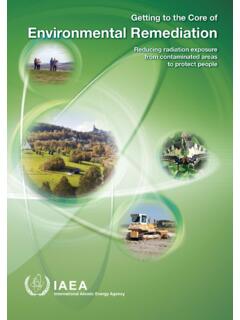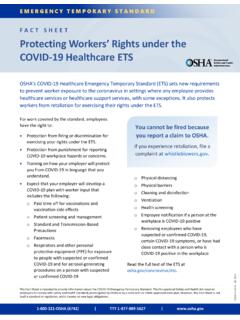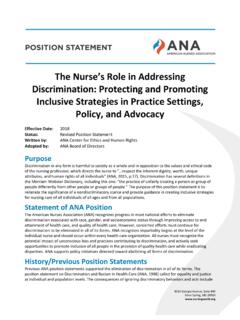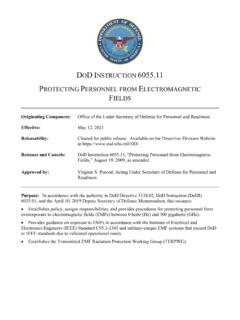Transcription of FCPS World II SOL Standards: WHII 9c Social Effects of the ...
1 FCPS World II SOL Standards: WHII 9cFCPS HS Social Studies 2014 Social Effects of the Industrial Revolution (1800-1920)You Mean There Was More to the Industrial Revolution Than a Bunch of Machines?Factories, Mines, and Child LaborThe Industrial Revolution created a great deal of change in society. One major change was the shift from work being done at home by hand in cottage industries to work being done in factories. There were harsh and unsafe working conditions in these early factories. The machines posed a significant threat to workers lives. Even more deadly was work performed in coal mines. Owners of mines and factories had considerable control over the lives of laborers who worked long hours for low pay. An average worker would work 14 hours a day, six days a week. Fearful of losing their jobs, workers would typically not complain about the horrible conditions and low pay.
2 Owners realized that they could pay women and children less than men. Child labor increased because it kept the costs of production low and the profits high. As a result, the working class lived in poverty, while the bosses who made up the middle class grew wealthy. Labor Unions and ReformsDuring the 1800s, working people began to demand reforms. Workers joined together in voluntary labor associations called unions. A union represented workers in a particular trade. Unions engaged in collective bargaining as well as negotiations between workers and their employers. Unions would ask for better working conditions, fewer hours, and higher pay. One of the greatest tools of labor unions was worker -organized strikes, refusing to work if demands were not met. Unions also lobbied for laws to improve the lives of workers, including women and children. By the 1830s and 1840s, the British Political Cartoon on Child Labor, 1912 Source: governments began to pass laws protecting workers.
3 The earliest laws focused on helping child labors. Though it was a very slow process, eventually laws would help all workers. Labor Strikes 1870 -1890 Source: Effects of the Industrial RevolutionThe Industrial Revolution had many positive Effects . Among those was an increase in wealth, the production of goods, and the standard of living. People had access to healthier diets, better housing, and cheaper goods. In addition, education increased during the Industrial Revolution. Due in part to the Edward Jenner s invention of the smallpox vaccine and Louis Pasteur s discovery of bacteria, health care increased, and people began to live longer. The middle and upper classes benefited immediately from the Industrial Revolution. For workers, it took much longer. However during the 1800s, workers formed labor unions and gained higher wages and better working conditions. As a result, they began to see the benefits of the Industrial Revolution as Effects of the Industrial Revolution (cont.)
4 WHII 9cFCPS HS Social Studies 2014 Connection to TodayChild labor and labor strikes exist today. Research these two topics. What nations and companies are impacted by child labor and labor strikes? ResourcesMarshall Cavendish Labor Movement and Unions: Factory Act (1833) +actKey VocabularyCottage Industry: making goods at home by hand, in particular textilesFactory: large buildings in which machines are used to create goodsChild Labor: the use of children as workers in factories and minesMiddle Class: a Social class made up of skilled workers, professionals, business people, and wealthy farmersUnions: an association of workers formed to bargain for better working conditions and higher wagesSuffrage: right to voteCollective Bargaining: negotiations between workers and their employersStrike: to refuse to work in order to force an employer to meet certain demandsLobby: to try to influence government officials to make decisions for or against somethingQuick title best completes the ?
5 In the chart? young girl in the political cartoon represents a child laborer. Why did business owners prefer to use child labor? Associations of journeymenB. Craft guildsC. Secret fraternal organizationsD. Labor unionsWhich of the following pairs of people are best identified with medical advances?A. Jethro Tull and Louis PasteurB. Michael Faraday and Samuel MorseC. Edward Jenner and Louis PasteurD. James Watt and Robert FultonA. The use of children kept production costs high and raised The use of children increased the output of The use of children increased productivity while raising The use of children lowered production costs and raised and explain one to two negative Effects of the Industrial Revolution and tow to three positive Effects . Changes for Women The Industrial Revolution marked a dramatic change for women as many of them entered the work force for the first time.
6 Women had to compete with men for jobs. Female factory workers often made only one-third as much as men. Women began leading reforms to change this. As women became more involved in politics, some began to demand suffrage, the right to vote. By 1918, Great Britian granted women over 30 the right to vote. The United States granted women suffrage with the passing of the 19th amendment in 1920. British Suffragist Source: :Women%27s_suffrage_in_the_United_Kingdo m#mediaviewer/
